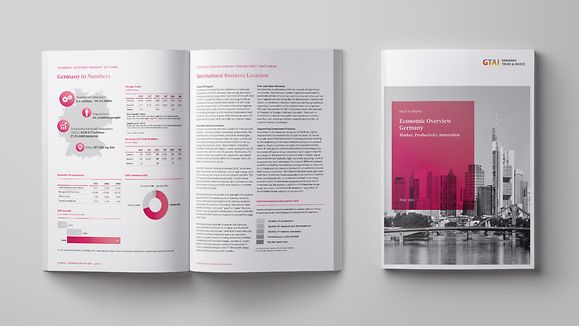Business and science work hand-in-hand to create innovative products and technologies - underpinning the success that will support your project in Germany.
Rising R&D Spending
Germany invests enormous sums in the development of new technologies and innovations. No other country in Europe invests a greater amount of money in R&D. Germany’s R&D spending has been rising constantly for almost a decade.
In 2023, public and private spending on research projects in Germany amounted to approximately EUR 129 billion – representing 3.1 percent of gross domestic product (GDP). This puts Germany in fourth place in the EU – only behind Sweden, Belgium and Austria but significantly ahead of the EU average and France.
Germany has already achieved the three percent GDP spending goal specified by the European Union for the sixth time in a row. More than two thirds of R&D spending originates from the business enterprise sector.
R&D Personnel
Germany is home to the biggest R&D community in Europe – 26 percent of the scientists and engineers in the EU live and work here. Moreover, researchers located in Germany are engaged in projects all over the world. The Max-Planck-Gesellschaft currently cooperates with international partners in more than 120 countries.
Renowned Research Institutes
Germany enjoys a unique global position thanks to its publicly subsidized research facilities outside the university sector.
The application-oriented research facilities, the Fraunhofer-Gesellschaft and the Leibniz-Gemeinschaft, provide mostly SMEs with access to top R&D facilities. The Fraunhofer-Gesellschaft currently holds R&D funds of EUR 3.4 billion which are used to finance projects in more than 76 institutes with over 32,000 employees. A considerable part of the Fraunhofer budget is raised through contract research in collaboration with the private sector. The network of the Leibniz-Gemeinschaft comprises 97 institutes and around 21,400 employees.
Renowned institutes for basic research are also located in Germany. The Max-Planck-Gesellschaft and the Helmholtz-Gemeinschaft enable companies to outsource costly basic research, thereby reducing the risks associated with new product and technology development. The close interaction between universities, non-university research institutes and industrial R&D departments forms a unique infrastructure for the creation of new knowledge that is unrivaled in the world. The entire range of R&D activities – from pre-competitive basic research supported by the public sector to application-oriented research financed by the private sector - can be found in Germany.
Effective Networks of Competency
Germany is characterized by an advanced landscape of highly innovative regional networks and clusters that provide companies with access to excellent technologies and know-how. Interactive research and learning processes ensure a faster diffusion of technology – including the subsequent introduction to the market.
A special quality seal is membership of the “go-cluster“ initiative of the Federal Ministry of Economic Affairs and Climate Action. This initiative includes around 70 clusters that meet strong criteria for membership. Admission depends on the level of cooperation between industry and science. This includes the extent to which a potential member is actively dedicated to innovation. Additionally, “go-cluster“ membership facilitates access to funds for the development of special cluster services.

